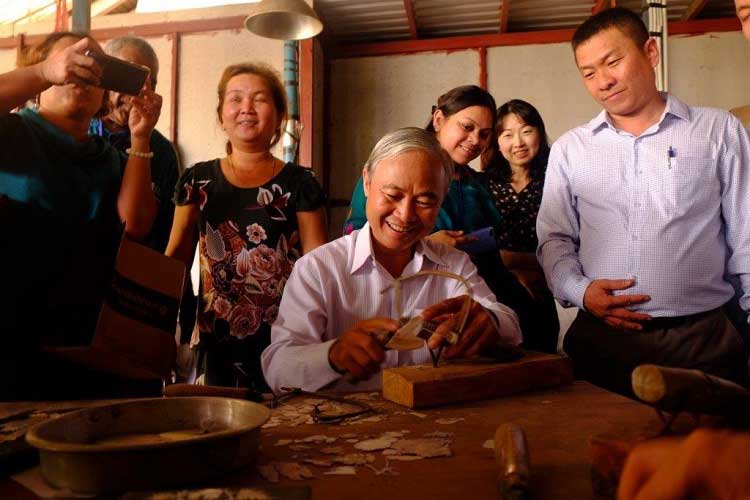
Select Page
 The availability of accessible, affordable rural resources allows many villages in the Asia-Pacific to continue long cultural and regional craft histories utilizing household labor. Handicraft production benefits rural societies in many ways. In addition to keeping traditions alive and strengthening cooperative local bonds through craft production and sales, handicrafts have strong linkages to tourism. As tourism increases, incomes are rising in craft-based destinations, leading to economic revitalization and greater self-sufficiency in rural areas. Several governments have made efforts to scale up craft tourism as a successful model of community-based development, although some craft villages are more successful than others. Issues to address include the seasonality of raw material availability for craft production, which can lead to inconsistencies in procurement and product quality. Tourist arrivals also fluctuate seasonally due to weather conditions.
The availability of accessible, affordable rural resources allows many villages in the Asia-Pacific to continue long cultural and regional craft histories utilizing household labor. Handicraft production benefits rural societies in many ways. In addition to keeping traditions alive and strengthening cooperative local bonds through craft production and sales, handicrafts have strong linkages to tourism. As tourism increases, incomes are rising in craft-based destinations, leading to economic revitalization and greater self-sufficiency in rural areas. Several governments have made efforts to scale up craft tourism as a successful model of community-based development, although some craft villages are more successful than others. Issues to address include the seasonality of raw material availability for craft production, which can lead to inconsistencies in procurement and product quality. Tourist arrivals also fluctuate seasonally due to weather conditions.
To promote effective ways to increase craft village competitiveness through taking advantage of technological advances and adopting business model innovations, an APO workshop on Trends in the Development of Traditional Craft Villages in the Industry 4.0 Era was held 2–4 October in Ho Chi Minh City, Vietnam. It was implemented by the SME Development Support Center 2 and Quality Assurance and Testing Center 3 of Vietnam. Dr. Ha Minh Hiep, Deputy Director General of the Directorate for Standards, Metrology and Quality, opened the workshop with welcoming remarks and later made a presentation as a local resource person. APO Secretariat Agriculture Department Program Officer Jisoo Yun also gave brief remarks at the opening to orient participants on workshop coverage and objectives.
The related topics of craft village development as a strategy for economic revitalization, IT applications for digital marketing, and new manufacturing technologies to raise product quality were covered in presentations and discussed in APO members’ specific sociocultural craft contexts. The 23 participants from 13 countries were mainly from national or local government units overseeing rural community development projects for economic revitalization or tourism promotion initiatives. All prepared action plans based on concepts presented during workshop, with adaptations to suit their national conditions. While developing her plan, a participant from Thailand commented that she would apply the learning points by merging the concepts of building up SME craft production and responsible tourism practices.
Three APO resource persons led the workshop proceedings: Associate Professor Dr. Alexandra Coghlan, Department of Tourism, Griffith University, Australia; Marketing Manager Elizabeth Slaunwhite, Cape Breton Center for Craft & Design, Canada; and Managing Director Mansoor Nadeem, MIA Dastkaar Zariwale, India. In their presentations, the resource persons shared lessons on craft business innovation, craft tourism development, and community revitalization by attracting talented artisans.
The workshop included a visit to Tu Bon Lacquer One Member Co., Ltd., a craft company producing traditional lacquerware such as paintings and decorative items. The owner described how new production machinery had been incorporated in operations, the company’s updated business model, and opportunities provided to community handicraft workers. The participants then observed production processes and workshop facilities.